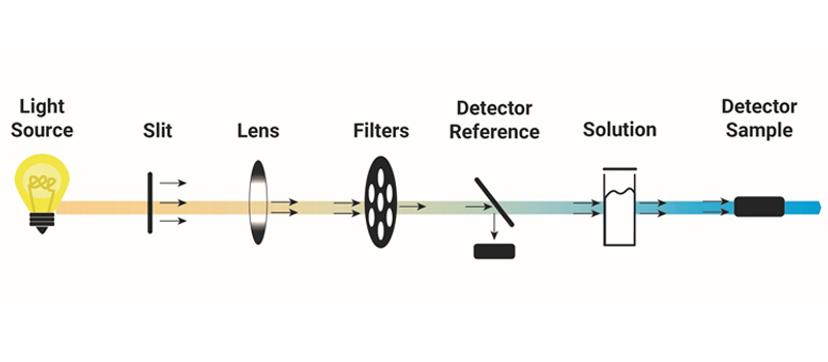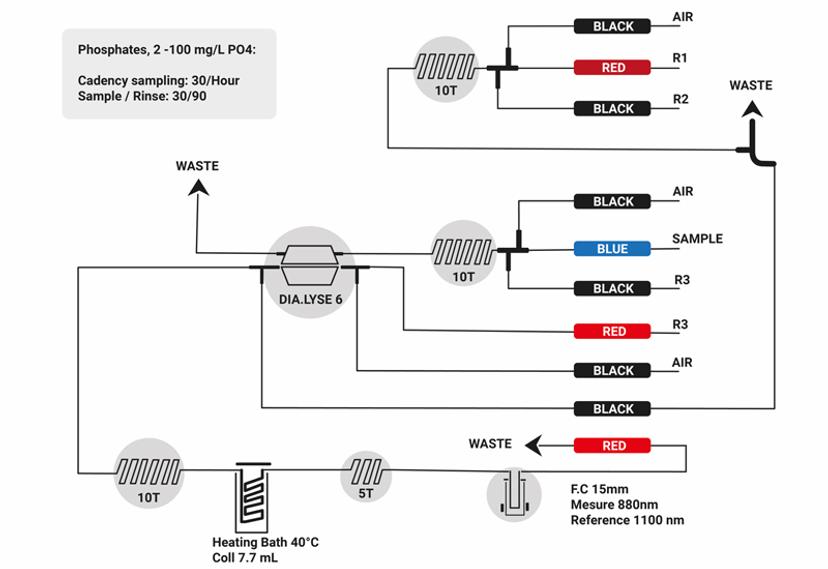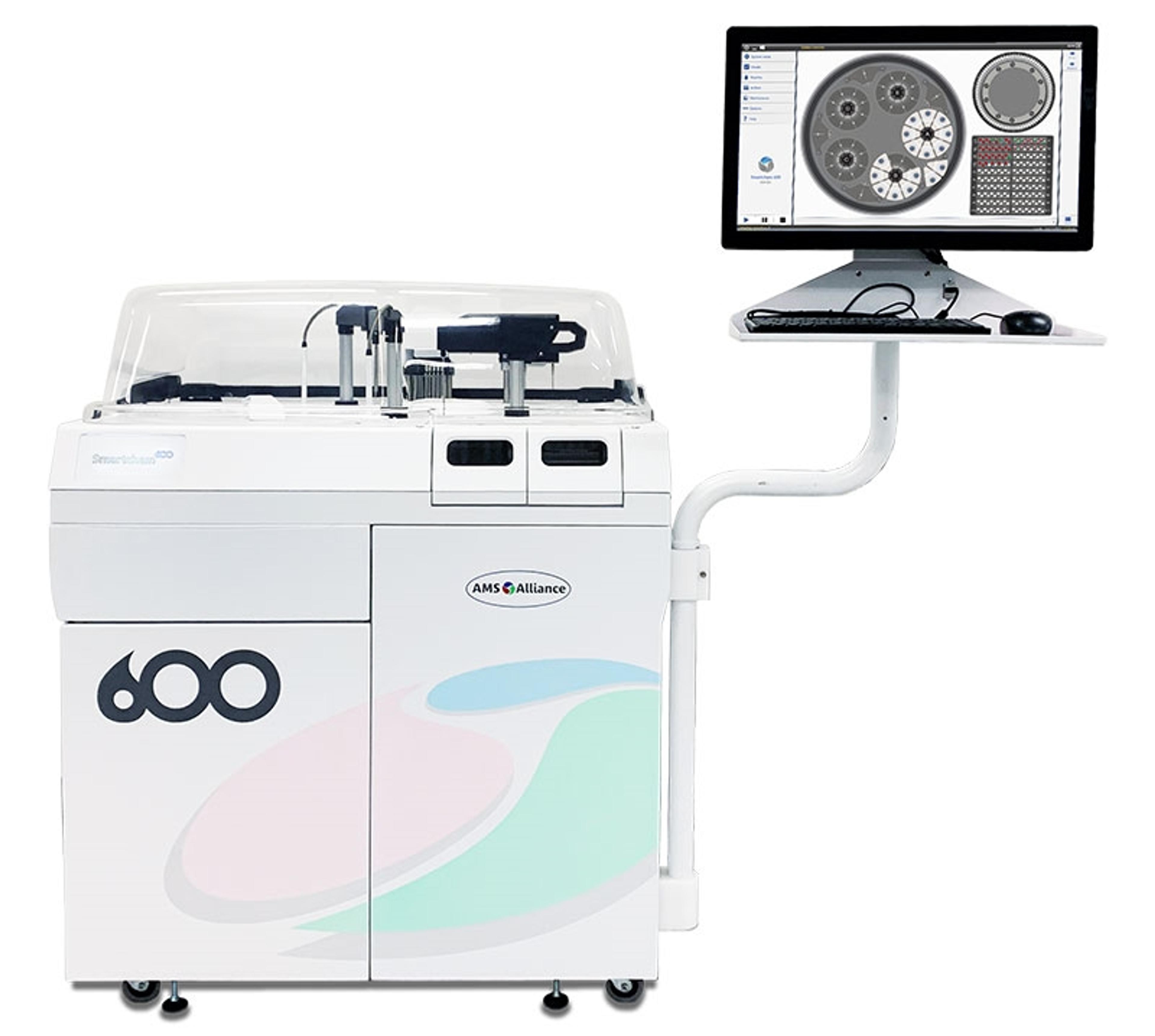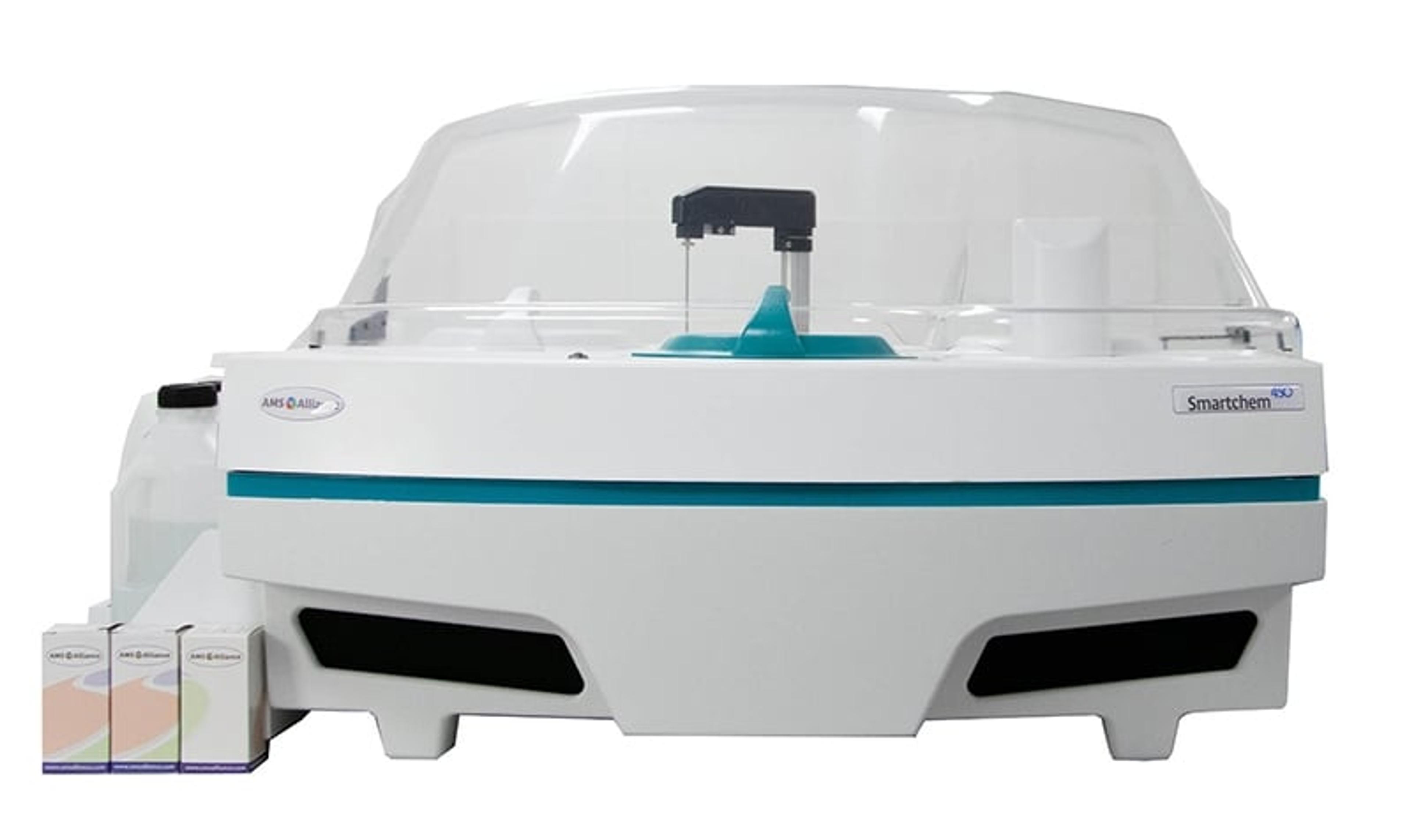Discrete analysis applied to nutrient analysis in soils
A natural evolution from Segmented Flow Analysis techniques
13 Apr 2023Traditionally, nutrient analysis in soils has been performed using Segmented Flow Analysis (SFA). This technique allows automation for the analytical part of the complete test, once the soil extract stage has been completed. This soil extraction step (Mehlich, Olsen, Bray etc. solid-liquid extraction methods) is selected according to the physico-chemical properties of the soil to be studied. They share common steps, including filtration, which does not allow for the automation of the extraction process.

Figure 1. Common extraction steps in soils
Given the fact soil extraction steps do not allow full inline automation coupled with automated determination, It is possible to define two specific stages: Extraction (offline) and Determination.
Discrete Analyzers
Discrete Analyzers, such as the SmartChem® 450, are fully automated analytical platforms using colorimetric detection for nutrient and inorganic analysis for soil extract analysis (NH4, NO2, NO3, PO4, K, POlsen, TKN, TKP, SO4, etc.), among other applications.

Figure 2. Schematic diagram of the UV-visible spectrophotometer principle for SmartChem® steps in soils
The SmartChem® 450 works with a dual beam, filter-wheel-based vis spectrophotometer as the principle of detection with end-point colorimetric methods.
With SmartChem® analyzers, the complete chemical test is run within the cuvette, where absorbance will be read after reaction reaches its end point. This means a series of discrete additions of different reagents are used instead of a continuous flow process as in SFA.
Traditionally, laboratories running soil, plant and fertilizer analysis, also perform the same tests on water, with very different working ranges from matrix to matrix.
This translates into a requirement to have access to different and well-defined measurement ranges that span from the sub-ppm region for water and plant extract testing, to high levels of ppm’s for soil and fertilizer extracts.
Comparing discrete and segmented flow analysis techniques
In SFA systems, there are two ways to have two or more defined ranges for a determined analyte:
- Have two or more manifolds per analyte, configured for different ranges
- Physically modify the analytical manifold, by changing the tubes’ diameter, to adjust it to the desired range.
Additionally, only one calibration curve can be loaded on the working manifold, meaning this calibration curve is to cover the span of the desired ranges if working with multiple matrices.
Discrete Analyzers differ from this automation solution and can have specific ranges defined in three different ways:
- Specific calibration for each desired matrix, plus the possibility of loading different matrices with different solvents (e.g. water testing with Mehlich extracts testing) on the same analytical batch.
- Multiple methods for the same analyte with different sample/reagent ratios.
- Multiple methods using different reagents, allowing high, mid and low range reagents to be set onboard.
With this, Discrete Analyzers allow a higher degree of flexibility; plus the fact that adding new analytes (methods) to the working routine does not require the investment into new manifolds, consoles, detectors, etc., and only the implementation of the method and its required reagents are affected.
It is fair to say, method adjustment with Discrete Analyzers becomes a simpler task than with Segmented Flow Analyzers, as no specific components are linked to specific methods (specific tubing, glass connectors, coils, etc.), but every method relies on the same common use components and routines.
Discrete Analyzers and the evolution of simplification – case study of phosphate testing
Figure 3 shows a Segmented Flow Analyzer manifold to measure phosphates in soil extracts with a 2 – 100 ppm (PO4) range.

Figure 3. Phosphates manifold (SFA)
Figure 4 shows a Discrete Analyzer routine for phosphate testing, where different ranges can be adapted based on the different items described in this article.

Figure 4. Discrete Analyzer routine for phosphate testing
From these diagrams, it also becomes evident Discrete Analyzers incur a lower reagent consumption rate, as a reagent is not continuously drawn from its container and passed through any manifold, but it is used only when required to be added to the cuvette. This means not only a reduced use of reagents, but also reduced waste generation.
The simplicity of the Discrete Analyzer working diagram in comparison to the Segmented Flow Analysis diagram for the PO4 manifold displays a degree of simplification of one system versus the latter. This means a shorter learning curve and easier handling of the instrument for laboratory staff, not to mention a more stable environment for the different components and consumables.
Discrete Analyzers bring more flexibility and simplicity to soil testing
As all solid-liquid extraction steps are run externally to the determination stage, Discrete Analyzers are a natural evolution to Continuous Flow Analysis techniques, bringing higher flexibility and simplicity for operators, and a greener approach.*
In addition to ease of operation and maintenance, control of the use of reagents (and waste generation), increased flexibility of analytical ranges and workload programming, the SmartChem® Discrete Analyzers offer the laboratory many other advantages, such as reusable reaction / optical cuvettes (avoiding single use plastics), user-friendly and easy-to-use software, as well as multiple variants to meet laboratory workload requirements. These features help existing Continuous Flow Analyzer users to consider moving towards Discrete Analyzers.
*This principle is also applicable for extracts of plants, fertilizers, tobacco, foodstuffs, etc.
Want the latest science news straight to your inbox? Become a SelectScience member for free today>>


